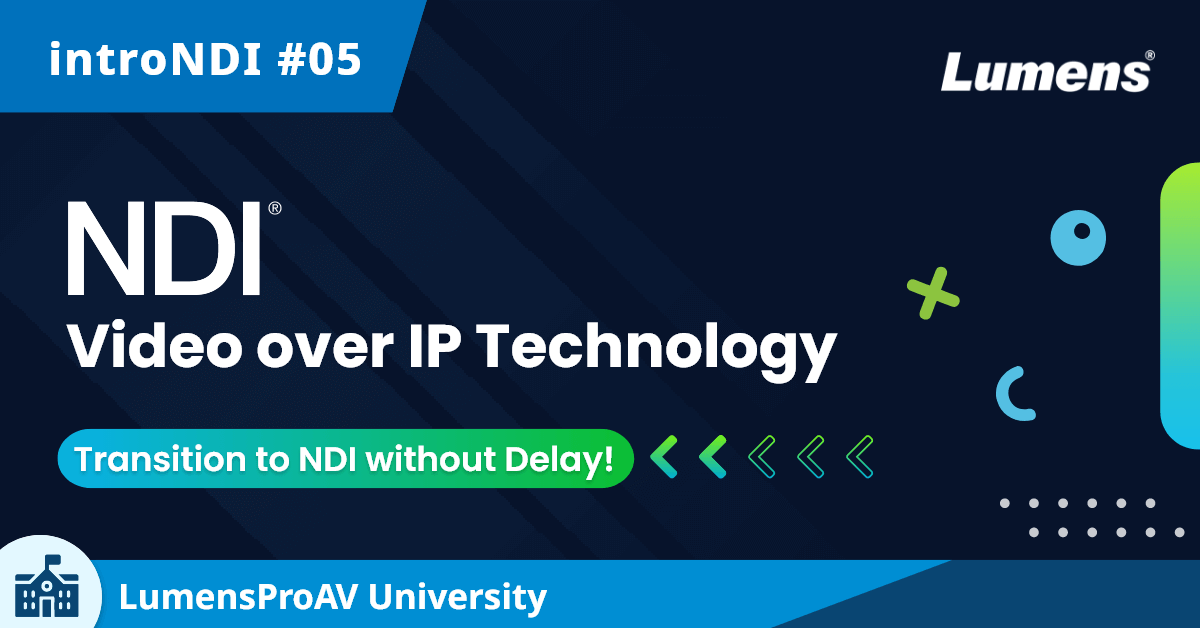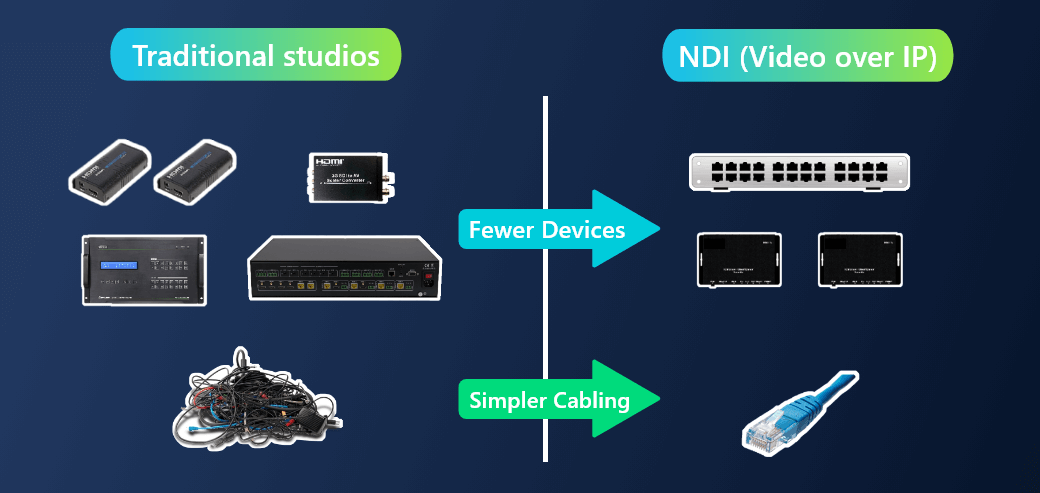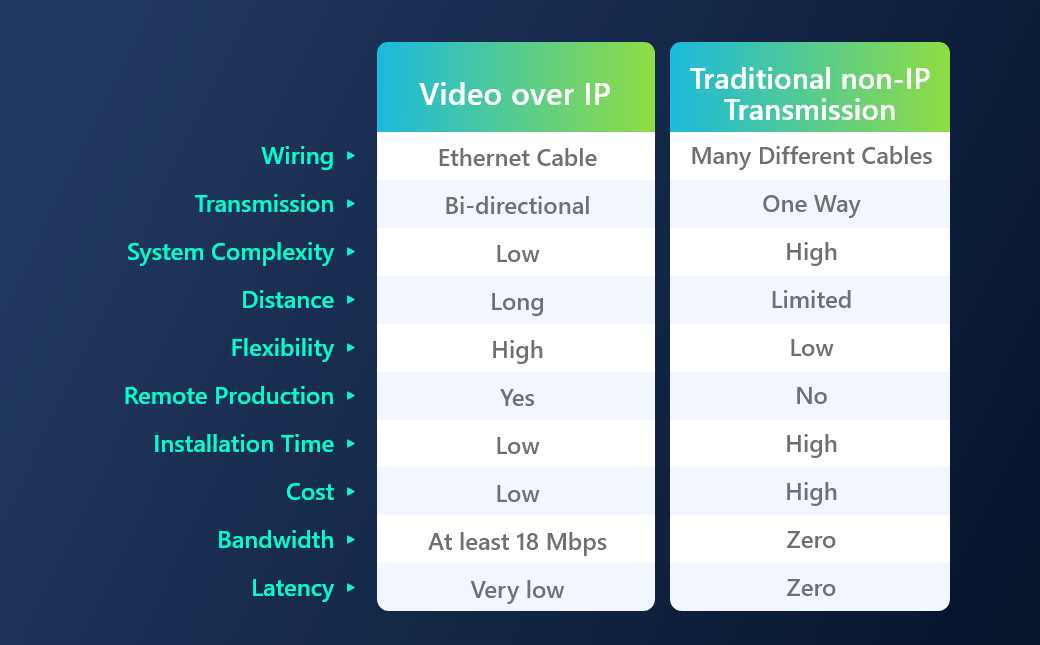【ProAV Lab】introNDI#05 - NDI Video over IP Technology
Written by Kieron Seth, Product Marketing Director at Lumens
March 29, 2022 33547

- NDI: Video over IP Technology
- What is Video over IP?
- Traditional Video Transmission
- The Advantages of Video over IP
- Transition to NDI without Delay!
NDI: Video over IP Technology
NDI® (Network Device Interface) is a video over IP technology developed by NewTek. It is a transcript protocol used to simplify the transmission of video content over Ethernet. NDI video streams are high-quality and low bandwidth, with minimal latency, making the technology perfect for use in live production. NDI runs over standard 1G and 10G Ethernet networks, representing a significant saving in cost and installation time.
What is Video over IP?
Natural human communication is face-to-face, in real-time. Communicating at a distance requires a mediator to enable the exchange of the message, whether that's an email server, content delivery network (CDN), or SMS service. Video-over-IP, delivering real-time media transport (one-way or two-way), requires mediation in the form of high-speed encoders, decoders, and switches, as well as a low-latency channel to transport the data.
.png)
The NDI video over IP standard operates on network devices (routers and switches) and Ethernet cables (Cat5e/Cat6e). Professional video equipment can be adapted for NDI output or input using converters, but increasingly cameras, displays, production systems, and broadcasting software support NDI natively. Because NDI supports bi-directional transmission, each device can serve as a source (messenger) or receiver (audience). For example, a camera can send a video to the production system, and the production system can send control signals to the camera.
Traditional Video Transmission
Traditionally, broadcast workflows rely on baseband signals requiring dedicated connectors and cables. Typically HDMI, SDI, and DVI are used for video content while XLR, RCA, and TS are for popular audio delivery. There are also many kinds of cables for control and tally. It's easy for a studio, AV installation or meeting room to be overwhelmed by a tangle of cables.
The Advantages of Video over IP
First, IP-based transmission runs bi-directionally: and all signals are routed over a network cable. A single Ethernet cable can deliver video, audio, control signals, and power the device (where supported). One cat 5e cable can replace a video cable (HDMI or SDI), an audio cable, a tally wire, and a power cable. This helps AV teams reduce the cost, timescale, and management overhead of video installations.
.png)
Second, Running over an IP network, every NDI device shares the same connection. When NDI devices are installed, they are instantly available as a video source and/or destination. The IP-based connection also makes remote production possible. With NDI, two production teams can work together remotely. A production studio in LA can work with another camera crew in New York over the network, in real-time.
System complexity is also a big advantage for video over IP, especially in large-scale deployments. In traditional studios, technicians need devices to extend signals, such as converters and repeaters. With video-over-IP, it's child's play to extend and scale a network, with almost no limit.

A common concern with video over IP is that AV signals will overwhelm the IT network, while video will suffer latency (delay). As a highly efficient protocol, NDI|HX addresses these two issues. NDI|HX provides high-quality, very low latency transmission, and users have many options to control their bandwidth to suit their network environment.

*NDI® is a registered trademark of the Vizrt Group.
Learn More...
- Lumens' Guide to NDI
- Beyond the Network: NDI over the Internet and WAN
- Lumens' Guide to NDIHX3
- NDI 5 in ProAV
